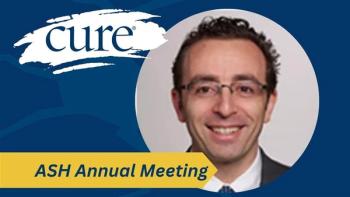
Precision Clinical Trial Aims to Find First New Treatment for AML in More than 40 Years
The Beat AML trial just launched, and researchers are hoping it will find better treatment for patients with acute myeloid leukemia.
In 1973, a chemotherapy cocktail was established as the standard treatment for acute myeloid leukemia (AML). The regimen has hardly changed since then, even as more effective and less toxic novel drugs have emerged for other cancer types.
With a precision clinical trial launched today, the Leukemia & Lymphoma Society (LLS) aims to change that.
Inspired by Vice President Joe Biden’s Cancer Moonshot initiative, and approved by the U.S. Food and Drug Administration (FDA), the umbrella trial, known as Beat AML, will enroll older patients who have the disease and use genomic profiling to determine if their cancers are driven by any mutations that can be targeted with drugs. Then, the patients will be given the investigational medications or drug combinations best suited to attack their molecular mutations.
It will be the first-ever precision medicine trial for a blood cancer, and among the first cancer clinical trials to be led by a nonprofit health organization, according to LLS, which identifies itself as the world’s largest voluntary health agency dedicated to fighting blood cancer.
The organization’s president and chief executive officer, Louis J. DeGennaro, Ph.D., announced the trial’s launch this afternoon at a press conference that included some of the trial’s investigators. On hand were John Byrd, M.D., of The Ohio State University Comprehensive Cancer Center, Brian Druker, M.D., of OHSU Knight Cancer Institute and Ross Levine, M.D., of Memorial Sloan Kettering Cancer Center. The expert who led LLS’s team in designing the trial, Amy Burd, Ph.D., also participated.
DeGennaro stressed the urgent need for new treatment approaches in AML, especially in patients over age 60, who represent the majority of those with the disease, and whose five-year survival rate is less than 20 percent. The most lethal of the blood cancers, AML affects 20,000 Americans each year and is responsible for more than 10,000 deaths annually.
DeGennaro noted that researchers have not ignored AML, but have simply been confounded by its complicated nature. “AML is a complex group of more than 10 different blood cancers,” he said. “It’s not one-size-fits-all.”
Investing money into AML research is something LLS has been doing since its inception in 1949, and in the last five years alone, the organization has spent nearly $100 million toward that purpose, not including costs associated with the Beat AML trial, DeGennaro said.
He called the trial an undertaking his organization is well-prepared to oversee. “The master trial,” DeGennaro said, “is evidence of our unique ability to convene the medical and research communities to improve outcomes.”
“LLS has been a neutral convening partner and a funding agency to accelerate progress,” Druker agreed. “I’m delighted to participate, to be driving the science behind this and to accelerate the progress against this deadly disease.”
Trial Details
Beat AML will exclusively include patients who are over 60 years of age and newly diagnosed with AML. While most AML trials are designed for people with relapsed or resistant disease, those patients tend to have far more genetic mutations. The theory behind this trial is that identifying genetic mutations early may offer a better chance for successful treatment.
The first patients are expected to be enrolled by December 2016. LLS anticipates that 500 patients will be treated in the trial. Once enrolled, trial duration for patients will range from one to three years.
The trial will start with four treatment arms. Four biopharmaceutical companies — Alexion, Boehringer Ingelheim, Celgene and Gilead Sciences — are participating, providing the following investigational drugs, respectively: samalizumab (ALXN6000), a targeted drug that disables the CD200 molecule, which is overexpressed in some cancers; BI 836858, a monoclonal antibody that disables the protein CD33, which can drive cancer; enasidenib (AG-221/CC-90007), an inhibitor of the enzyme IDH2; and entospletinib, a drug that inhibits B cell receptor signaling, a process that can go awry in blood cancers.
Many other pharmaceutical companies have expressed interest in joining the study, and additional treatment arms may be added over time. In fact, while all the drugs in the trial will be experimental, there’s hope that promising drugs already approved for the treatment of other cancers — such as Venclexta (venetoclax), used to treat chronic lymphocytic leukemia — might become available for use in one or more combination arms of the trial, Byrd said.
Everyone who undergoes genomic testing through Beat AML will be put on a drug or a combination of drugs; if such a regimen doesn’t work well, standard chemotherapy will be added. Patients who don’t benefit from their initial experimental therapy will not be allowed to change trial arms, though, as their disease will then be considered relapsed or refractory to treatment. When drugs don’t work for patients, the trial will give investigators an opportunity to conduct intensive laboratory study to try to determine why, Byrd noted.
“Our goal is to give multiple targeted drugs and move away from chemotherapy in as many patients as we can, while preserving the chance of long-term remission in the subset of patients cured with chemotherapy,” Byrd said. “We want to pick the best therapies for individual patients and get them to (potentially curative stem cell) transplantation when possible — and by giving less toxic therapies, patients fit for transplant will be able to move to that.”
The trial will launch at The Ohio State University Comprehensive Cancer Center, Memorial Sloan Kettering Cancer Center, OHSU Knight Cancer Institute, Dana-Farber Cancer Institute and Massachusetts General Hospital Cancer Center. Six additional clinical sites are prepared to begin enrolling patients in April 2017, and the trial will eventually expand to between 15 to 20 sites and up to 10 different treatment arms.
In addition to testing new drugs, the trial will represent a diversion from typical AML treatment because it will necessitate that patients wait seven days, until their genomics have been analyzed, before getting any drugs.
“We’ve been taught that you need to treat AML before the sun sets,” Byrd said. “However, studies show that the outcome is the same if patients are treated immediately or after a period of stabilization. In addition, when we sponsored a survivorship meeting with the FDA, we learned that it’s common for patients who have survived AML to have post-traumatic stress disorder from having to move forward with therapy so soon.”
Another benefit of the trial is that it will include patient-reported outcomes as a measure of success, a tactic that has been recommended under the Moonshot initiative.
Other collaborators in the Beat AML trial include Foundation Medicine, a leading molecular information company; INC Research, a clinical research organization; Protocol First, providing a novel web-based digital application to help guide the clinicians; and myClin, providing a clinical trial knowledge platform to streamline communications between the clinical trial sites.
Patients interested in learning more about the trial, or in enrolling, can find information at





